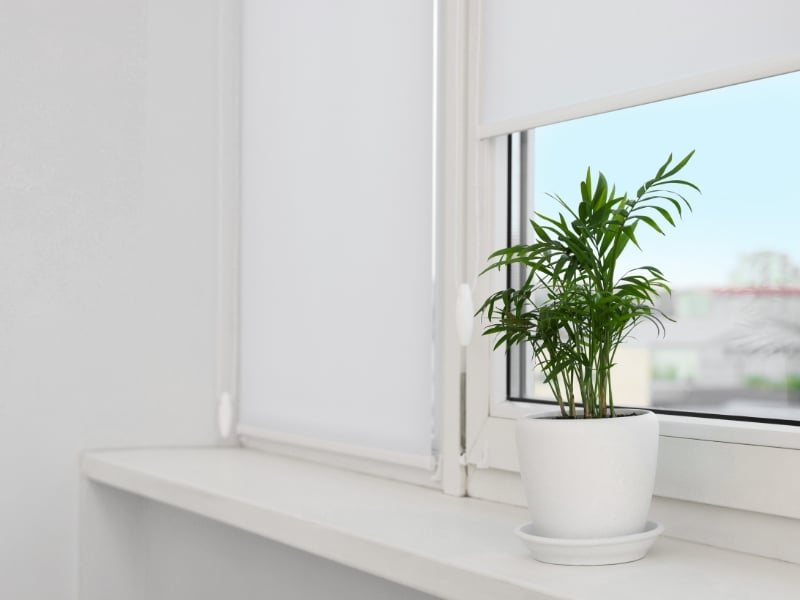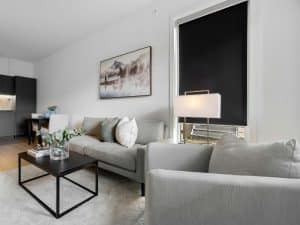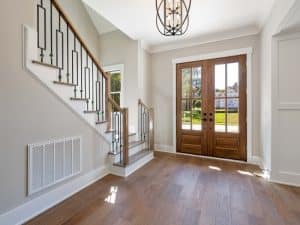Looking to upgrade your window coverings? Blockout roller blinds are a top choice for many Sydney homeowners thanks to their sleek look, energy efficiency, and unbeatable light control. But are they really the right fit for every room in your home or business? This article will break it down room by room to help you determine where block-out roller blinds work best and where they might not.
What are blockout roller blinds, and how do they work?
Blockout roller blinds are a type of window covering made from a dense, opaque fabric that prevents any light from passing through. Unlike sheer or translucent blinds, these are designed to block out sunlight completely when closed.
How they work:
- Installed on a roller mechanism for smooth operation
- It can be chain-driven or motorised
- Custom-fit to your window size
- Often paired with side channels for total light blockage
They’re not just about style—they’re practical as well, especially in our harsh Aussie sun.
Can you use blockout roller blinds in every room?
Technically, yes. But should you? That depends on how each space is used. Here are the considerations before installing block out blinds in a room:
- How much natural light do you need
- Whether you need privacy
- How often will the blinds be opened or closed
- If you want to pair them with other treatments (like sheers)
Room Type | Blockout Roller Blinds Suitability |
Bedroom | Excellent |
Nursery | Excellent |
Living Room | Good (with combo treatments) |
Kitchen | Mixed (check ventilation & splash zones) |
Bathroom | Mixed (moisture resistance is key) |
Study/Home Office | Great for reducing glare |
Hallways | Not necessary |
Not every room needs complete darkness—so explore each one.
Are blockout roller blinds ideal for bedrooms and nurseries?
Absolutely. Bedrooms and nurseries are where these blinds shine.
Top reasons to use block out blinds in sleeping areas:
- Sleep quality: Blocks out early morning light for longer sleep-ins
- Baby naps: Keeps nurseries calm and dim during the day
- Privacy: Essential for rooms facing the street or neighbours
- Insulation: Helps maintain a consistent sleep temperature year-round
Bonus tip: Pair with curtains or pelmets for a complete look and better insulation.
Should you use blockout blinds in living areas?
It depends on your setup and lifestyle. Managing sunlight in Australian homes is all about finding that sweet spot between comfort and practicality.
Pros:
- Great for movie nights or TV viewing (no glare!)
- Enhances privacy if your lounge faces a busy street
- Adds a clean, modern look—perfect for contemporary spaces
Cons:
- It might make the space feel darker during the day
- Not ideal if you rely on natural light
- Some find the look a bit too “plain” for cosy living rooms
Pro tip: Many Sydney homeowners use double roller blinds, pairing a blockout with a sheer blind. That way, you get the best of both worlds: light during the day and privacy and shade at night.
Are blockout roller blinds suitable for kitchens and bathrooms?
They can be a great option, but you’ll want to choose wisely to suit these high-moisture, high-use areas. Kitchens and bathrooms come with a few unique challenges, so it’s important to select materials that can handle the environment. Here’s what to check before installing block out blinds in these rooms:
- Moisture resistance: Choose PVC or specially treated block-out fabrics that won’t absorb moisture or develop mould and mildew over time.
- Ease of cleaning: Kitchens get steamy and sometimes greasy. Look for blinds with a smooth surface that you can wipe down easily with a damp cloth—no fuss.
- Proximity to heat: If your window sits near a stovetop, cooktop, or oven, make sure the blinds aren’t in direct heat. This helps prevent warping, discolouration, or potential fire risks.
With the right material and placement, blockout roller blinds can work a treat in both kitchens and bathrooms.
What about home offices or study rooms?
Blockout roller blinds are a ripper choice for home offices and study spaces. They don’t just look sleek—they’re practical, too. Here’s why they work so well:
- Glare control: Blockout blinds reduce harsh sunlight and screen glare, making it easier to read, type, and focus, especially during those mid-morning Zooms.
- Focus-friendly atmosphere: A darker space helps cut distractions and creates a calm environment, perfect for getting in the zone.
- Professional background: Neat, modern blinds give your room a tidy look and keep your video call background free from visual clutter.
If you work from home most days, the right window coverings can genuinely elevate your workspace, both in function and appearance.
Which rooms should avoid full blockout blinds?
Not every room needs complete darkness. In some spaces, full blockout blinds might be a bit much and could even make the area feel less practical. Choosing the right roller blinds for your property means thinking about how each room is used and what kind of light or privacy it actually needs.
Rooms where blockout blinds might not be the best fit:
- Hallways: These areas benefit from natural light to feel open, welcoming, and safe, especially in homes with minimal lighting.
- Laundry rooms: You’ll want brightness to spot stains or sort clothes. Privacy isn’t usually a concern here.
- Pantries or storage spaces: There’s rarely a need for complete darkness, and block-out fabrics here might just eat into your budget unnecessarily.
Better alternatives to consider:
- Sunscreen roller blinds: Let in soft, filtered daylight while reducing glare.
- Sheer curtains: Add a touch of elegance and diffused light.
- Venetian or vertical blinds: Great for adjustable light control and airflow.
Pro tip: Save blockout blinds for rooms where light control or privacy is essential. In other spaces, focus on style, softness, and letting the light in.
Conclusion
At the end of the day, blockout roller blinds bring loads of benefits—light control, privacy, insulation, and style. They’re great for bedrooms, nurseries, and home offices. With the right fabric, they also hold their own in kitchens and bathrooms. But in hallways or storage rooms? You’ve probably got better options.
If you need help deciding what suits your space, you can discuss your window covering needs with iStyle Shutters.




